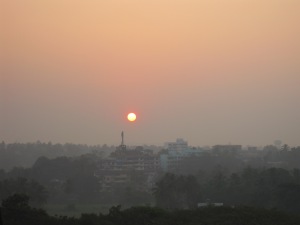I have learned this year that every time I move locations whether it’s to a different area of the province, across provinces, or across the world it brings with it new sustainability opportunities and challenges.

I have committed recently to moving to London, England after I graduate from University this spring and there are already things that I know will improve my sustainability and things that will at least initially hinder my efforts.
First, some things I am looking forward to:
- No car: I can’t exactly take it with me and I will finally be living in a place where I don’t need it
- Metered utilities: I doubt my budget will like this much, but I am looking forward to actually being accountable and at the very least be able to track my energy consumption, I think it will help me cut back a lot more effectively.
- Public transportation: kind of like not having a car, but in general I just rather like public transportation and it will get me to walk more
- Possibly gardening: There’s a small backyard where I will be living which I might be able to tinker with as a hobby
Some things I don’t think will help my sustainability:
- Having to start over again with food: I imagine it will take time again to learn how to tell where things are from, what is local, where to get local food, etc.
- Continued limited food options: I know the grocery store nearest to where I will be living does not have the widest selection of products (it’s a pretty small grocery store) and plus it’s in the city so I’m not sure how many farmers there are nearby like there are here in New Brunswick.
- Contributing to increasing urbanization
- Having to relearn what’s really “green”: I’ll have to figure out what UK products and brands are really environmentally friendly, and what new/different eco-labels they have in the UK and their meanings
I’m looking forward to the move and what changes in sustainability it will bring. The flight over there won’t help with my sustainability, but I plan on sticking to their weight limitations without buying any extra allowances for my luggage. This will also help encourage me to cut back on all the goods I own and be less materialistic. Iceland Air, which I’ll be flying on, has approximately 144 pound limit for their overseas flights: two check bags and two carry on ones. It will be interesting to try to stick below that and still take everything I’ll need with me. I am very much looking forward to trimming down my possessions though and getting rid of a lot of things that I just simply don’t need. I’ll try to write a blog post in the future about what kinds of new homes I was able to give my various items.
~Jessica

